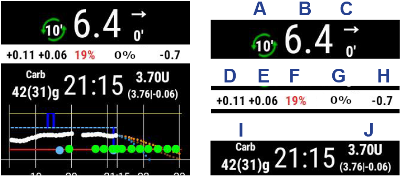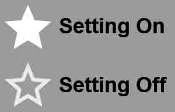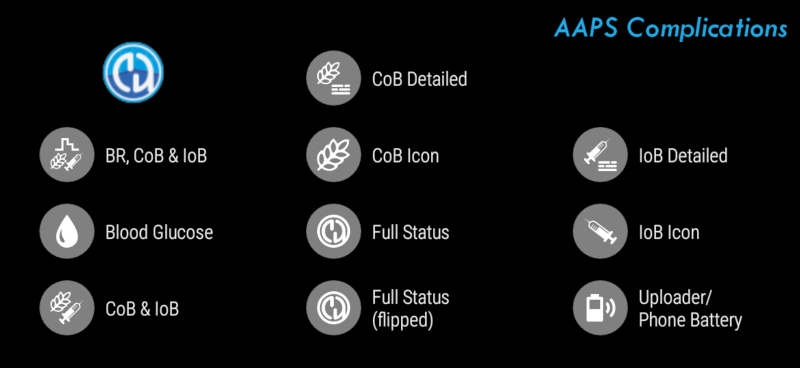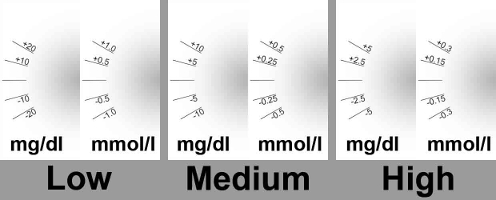AAPS on Wear OS smartwatch¶
You can install AndroidAPS app on your Wear OS based smartwatch. Watch version of AAPS allows you to:
- display data on your watch: by providing custom watchfaces or in standard watchfaces with use of complications
- control AAPS on phone: to bolus, set a temporary target etc.
Before you buy watch...¶
- Some features like complications require Wear OS version 2.0 or newer to work
- Google rebranded Android Wear 1.x to Wear OS from version 2.x, so when it says Android Wear it may indicate older 1.x version of system
- If description of smartwatch indicates only compatibility with Android and iOS - it does not means it runs on Wear OS - it may as well be some other sort of Vendor specific OS which is not compatible with AAPS wear!
- Check list of tested phones and watches and ask community if in doubt if your watch will be supported
Building Wear OS version of AAPS¶
To build Wear OS version of AAPS you needed to select the build variant “fullRelease” when building the APK (or “pumpRelease” will allow you to just remote control the pump without looping).
Make sure both phone and wear versions of AAPS are signed with same keys!
Wear variant of APK need to be installed on watch in the same way you will install phone APK on phone. It may require enabling developer mode on watch and uploading and installing APK on watch with: adb install wear-full-release.apk
When using wear version of AAPS, always update it together with phone version of app - keep their versions in sync.
Setup on the Phone¶
Within AndroidAPS, in the ConfigBuilder you need to enable Wear plugin.
Controlling AAPS from Watch¶
AndroidAPS is designed to be controlled by Android Wear watches. If you want to bolus etc. from the watch then within “Wear settings” you need to enable “Controls from Watch”.
The following functions can be triggered from the watch:
- set a temporary target
- administer a bolus
- administer eCarbs
- use the bolus calculator (calculation variables can be defined in settings on the phone)
- check the status of loop and pump
- show TDD (Total daily dose = bolus + basal per day)
AAPS Watchfaces¶
There are several watchfaces to choose from that include average delta, IOB, currently active temp basal rate and basal profiles + CGM readings graph.
Ensure notifications from AndroidAPS are not blocked on the watch. Confirmation of action (e.g. bolus, tempt target) comes via notification which you will need to swipe and tick.
To get faster to the AAPS menu, do a double tap on your BG. With a double tap onto the BG curve you can change the time scale..
Watchfaces available¶

AAPSv2 watchface - Legend¶

A - time since last loop run
B - CGM reading
C - minutes since last CGM reading
D - change compared to last CGM reading (in mmol or mg/dl)
E - average change CGM reading last 15 minutes
F - phone battery
G - basal rate (shown in U/h during standard rate and in % during TBR)
H - BGI (blood glucose interaction) -> the degree to which BG “should” be rising or falling based on insulin activity alone.
I - carbs (carbs on board | e-carbs in the future)
J - insulin on board (from bolus | from basal)
Settings (in wear watch)¶
To access to the watchface settings, enter AAPS main menu, slide up and select “Settings”.
Filled star is for enabled state (On), and hollow star icon indicates that setting is disabled (Off):

AAPS companion parameters¶
- Vibrate on Bolus (default
On): - Units for Actions (default
mg/dl): if On units for actions ismg/dl, if Off unit ismmol/l. Used when setting a TT from watch.
Watchface settings¶
- Show Date (default
Off): note, date is not available on all watchfaces - Show IOB (default
On): Display or not IOB value (setting for detailed value is in AAPS wear parameters) - Show COB (default
On): Display or not COB value - Show Delta (default
On): Display or not the BG variation of the last 5 minutes - Show AvgDelta (default
On): Display or not the average BG variation of the last 15 minutes - Show Phone Battery (default
On): Phone battery in %. Red if below 30% . - Show Rig Battery (default
Off): Rig battery is a synthesis of Phone battery, pump battery and sensor battery (generally the lowest of the 3 values) - Show Basal Rate (default
On): Display or not current basal rate (in U/h or in % if TBR) - Show Loop Status (default
On): show how many minutes since last loop run (arrows around value turn red if above 15’). - Show BG (default
On): Display or not last BG value - Show Direction Arrow (default
On): Display or not BG trend arrow - Show Ago (default
On): show how many minutes since last reading. - Dark (default
On): You can switch from black background to white background (except for Cockpit and Steampunk watch face) - Highlight Basals (default
Off): Improve the visibility of basal rate and temp basals - Matching divider (default
Off): For AAPS, AAPSv2 and AAPS(Large) watchfaces, show contrast background for divider (Off) or match divider with the background color (On) - Chart Timeframe (default
3 hours): you can select in the sub menu the max time frame of your chart between 1 hour and 5 hours.
User Interface setting¶
- Input Design: with this parameter, you can select the position of “+” and “-” buttons when you enter commands for AAPS (TT, Insulin, Carbs...)

Specific watchface parameters¶
Circle WF¶
- Big Numbers (default
Off): Increase text size to improve visibility - Ring History (default
Off): View graphically BG history with gray rings inside the hour’s green ring - Light Ring History (default
On): Ring history more discreet with a darker gray - Animations (default
On): When enabled, on supported by watch and not in power saving low-res mode, watchface circle will be animated
Commands settings¶
- Wizard in Menu (default
On): Allow wizard interface in main menu to input Carbs and set Bolus from watch - Prime in Menu (default
Off): Allow Prime / Fill action from watch - Single Target (default
On):On: you set a single value for TTOff: you set Low target and high target for TT
- Wizard Percentage (default
Off): Allow bolus correction from wizard (value entered in percentage before confirmation notification)
Complications¶
Complication is a term from traditional watchmaking, where it describes addition to the main watchface - as another small window or sub-dial (with date, day of the week, moon phase, etc.). Wear OS 2.0 brings that metaphor to allow custom data providers, like weather, notifications, fitness counters and more - to be added to any watchfaces that support complications.
AndroidAPS Wear OS app supports complications since build 2.6, and allow any third party watchface that supports complications to be configured to display AAPS related data (BG with the trend, IOB, COB, etc.).
Complications also serve as shortcut to AAPS functions. By tapping them you can open AAPS related menus and dialogs (depending on complication type and configuration).

Complication Types¶
AAPS Wear OS app provides only raw data, according to predefined formats. It is up to third-party watchface to decide where and how to render complications, including its layout, border, color, and font. From many Wear OS complication types available, AAPS uses:
SHORT TEXT- Contains two lines of text, 7 characters each, sometimes referred to as value and label. Usually rendered inside a circle or small pill - one below another, or side by side. It is a very space-limited complication. AAPS tries to remove unnecessary characters to fit-in: by rounding values, removing leading and trailing zeroes from values, etc.LONG TEXT- Contains two lines of text, about 20 characters each. Usually rendered inside a rectangle or long pill - one below another. It is used for more details and textual status.RANGED VALUE- Used for values from predefined range, like a percentage. It contains icon, label and is usually rendered as circle progress dial.LARGE IMAGE- Custom background image that can be used (when supported by watchface) as background.
Complication Setup¶
To add complication to watchface, configure it by long press and clicking the gear icon below. Depending on how specific watchface configures them - either click on placeholders or enter the watchface setup menu for complications. AAPS complications are grouped under the AAPS menu entry.
When configuring complications on watchface, Wear OS will present and filter the list of complications that can be fit into selected complication place on watchface. If specific complications cannot be found on the list, it is probably due to its type that cannot be used for the given place.
Complications provided by AAPS¶
AndroidAPS provides following complications:

- BR, CoB & IoB (
SHORT TEXT, opens Menu): Displays Basal Rate on the first line and Carbs on Board and Insulin on Board on the second line. - Blood Glucose (
SHORT TEXT, opens Menu): Displays Blood Glucose value and trend arrow on the first line and measurement age and BG delta on the second line. - CoB & IoB (
SHORT TEXT, opens Menu): Displays Carbs on Board on the first line and Insulin on Board on the second line. - CoB Detailed (
SHORT TEXT, opens Wizard): Displays current active Carbs on Board on the first line and planned (future, eCarbs) Carbs on the second line. - CoB Icon (
SHORT TEXT, opens Wizard): Displays Carbs on Board value with a static icon. - Full Status (
LONG TEXT, opens Menu): Shows most of the data at once: Blood Glucose value and trend arrow, BG delta and measurement age on the first line. On the second line Carbs on Board, Insulin on Board and Basal Rate. - Full Status (flipped) (
LONG TEXT, opens Menu): Same data as for standard Full Status, but lines are flipped. Can be used in watchfaces which ignores one of two lines inLONG TEXT - IoB Detailed (
SHORT TEXT, opens Bolus): Displays total Insulin on Board on the first line and split of IoB for Bolus and Basal part on the second line. - IoB Icon (
SHORT TEXT, opens Bolus): Displays Insulin on Board value with a static icon. - Uploader/Phone Battery (
RANGED VALUE, opens Status): Displays battery percentage of AAPS phone (uploader), as reported by AAPS. Displayed as percentage gauge with a battery icon that reflects reported value. It may be not updated in real-time, but when other important AAPS data changes (usually: every ~5 minutes with new Blood Glucose measurement).
Additionally, there are three complications of LARGE IMAGE kind: Dark Wallpaper, Gray Wallpaper and Light Wallpaper, displaying static AAPS wallpaper.
Performance and battery life tips¶
Wear OS watches are very power-constrained devices. The size of the watch case limits the capacity of the included battery. Even with recent advancements both on hardware and software side, Wear OS watches still require daily charging.
If an experienced battery span is shorter than a day (from dusk to dawn), here are some tips to troubleshoot the issues.
Main battery-demanding areas are:
- Active display with a backlight on (for LED) or in full intensity mode (for OLED)
- Rendering on screen
- Radio communication over Bluetooth
Since we cannot compromise on communication (we need up-to-date data) and want to have the most recent data rendered, most of the optimizations can be done in display time area:
- Stock watchfaces are usually better optimized than custom one, downloaded from the store.
- It is better to use watchfaces that limit the amount of rendered data in inactive / dimmed mode.
- Be aware when mixing other Complications, like third party weather widgets, or other - utilizing data from external sources.
- Start with simpler watchfaces. Add one complication at the time and observe how they affect battery life.
- Try to use Dark theme for AAPS watchfaces, and Matching divider. On OLED devices it will limit the amount of pixels lit and limit burnout.
- Check what performs better on your watch: AAPS stock watchfaces or other watchfaces with AAPS Complications.
- Observe over a few days, with different activity profiles. Most watches activate the display on glancing, movement and other usage-related triggers.
- Check your global system settings that affect performance: notifications, backlight/active display timeout, when GPS is activated.
- Check list of tested phones and watches and ask community for other users experiences and reported battery lifetime.
- We cannot guarantee that data displayed on watchface or complication is up-to-date. In the end, it is up to Wear OS to decide when to update a watchface or a complication. Even when the AAPS app requests update, the System may decide to postpone or ignore updates to conserve battery. When in doubt and low on battery on watch - always double-check with main AAPS app on phone.
Troubleshooting the wear app:¶
- On Android Wear 2.0 the watch screen does not install by itself anymore. You need to go into the playstore on the watch (not the same as the phone playstore) and find it in the category apps installed on your phone, from there you can activate it. Also enable auto update.
- Sometimes it helps to re-sync the apps to the watch as it can be a bit slow to do so itself: Android Wear > Cog icon > Watch name > Resync apps.
- Enable ADB debugging in Developer Options (on watch), connect the watch via USB and start the Wear app once in Android Studio.
- If Complications does not update data - check first if AAPS watchfaces work at all.
View Nightscout data¶
If you are using another looping system and want to view your looping detail on an Android Wear watch, or want to watch your child’s looping, then you can build/download just the NSClient APK. To do this follow the build APK instructions selecting the build variant “NSClientRelease”. There are several watchfaces to choose from that include average delta, IOB, currently active temp basal rate and basal profiles + CGM readings graph.
Pebble¶
Pebble users can use the Urchin watchface to view looping data (if uploaded to Nightscout), but you will not be able to interact with AndroidAPS through the watch. You can choose fields to display such as IOB and currently active temp basal rate and predictions. If open looping you can use IFTTT to create an applet that says if Notification received from AndroidAPS then send either SMS or pushover notification.
